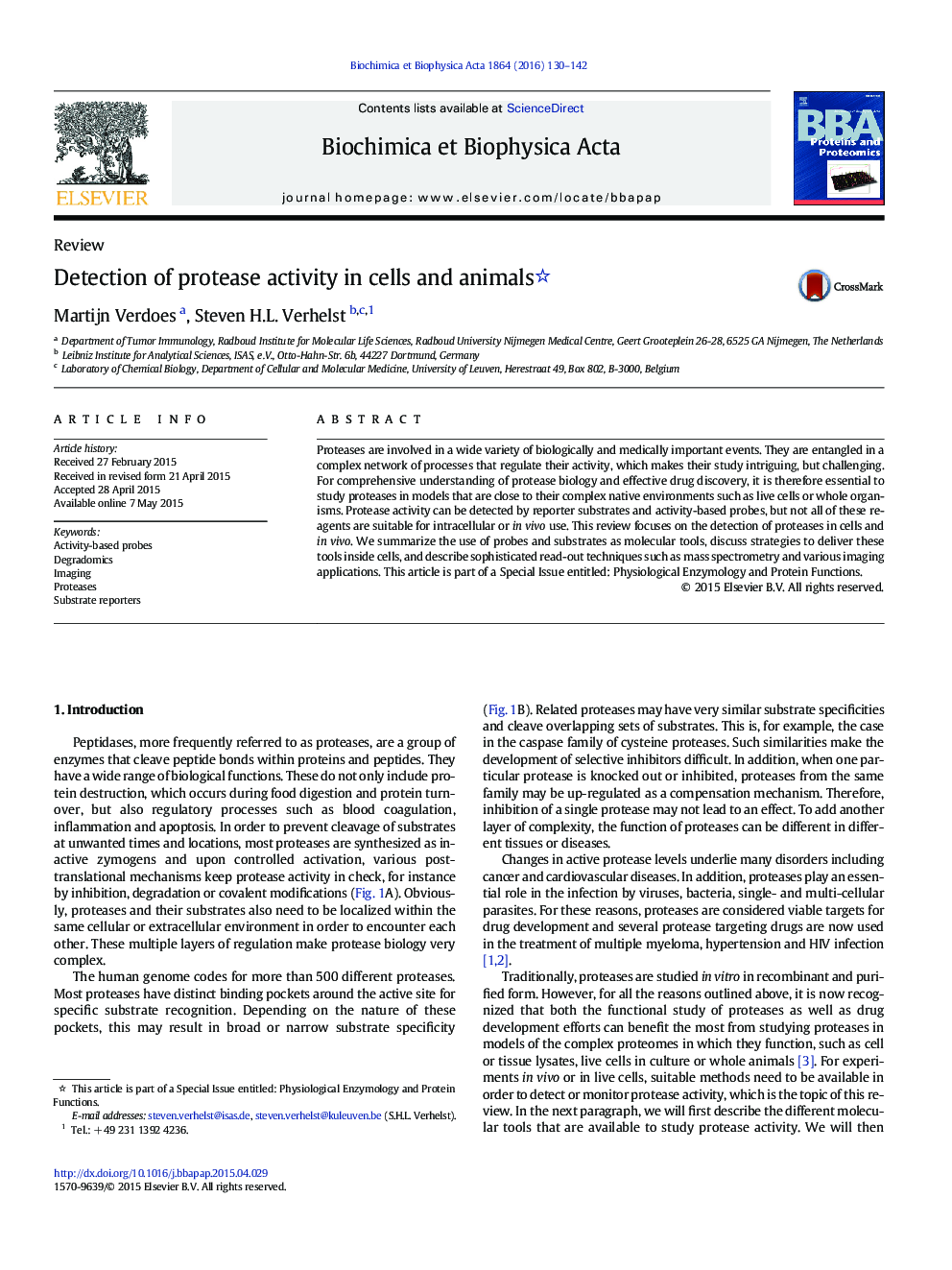| Article ID | Journal | Published Year | Pages | File Type |
|---|---|---|---|---|
| 1178213 | Biochimica et Biophysica Acta (BBA) - Proteins and Proteomics | 2016 | 13 Pages |
•Protease activity is tightly regulated and needs study in complex proteomes.•Substrates and activity-based probes can be used to determine activity inside cells.•A variety of chemistries has been developed for intracellular delivery.•Advances in analytical techniques allow detailed read-out of protease activity.
Proteases are involved in a wide variety of biologically and medically important events. They are entangled in a complex network of processes that regulate their activity, which makes their study intriguing, but challenging. For comprehensive understanding of protease biology and effective drug discovery, it is therefore essential to study proteases in models that are close to their complex native environments such as live cells or whole organisms. Protease activity can be detected by reporter substrates and activity-based probes, but not all of these reagents are suitable for intracellular or in vivo use. This review focuses on the detection of proteases in cells and in vivo. We summarize the use of probes and substrates as molecular tools, discuss strategies to deliver these tools inside cells, and describe sophisticated read-out techniques such as mass spectrometry and various imaging applications. This article is part of a Special Issue entitled: Physiological Enzymology and Protein Functions.
Graphical abstractFigure optionsDownload full-size imageDownload high-quality image (165 K)Download as PowerPoint slide
